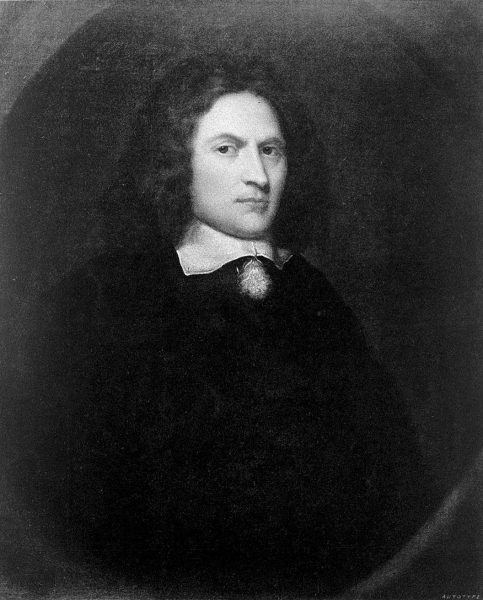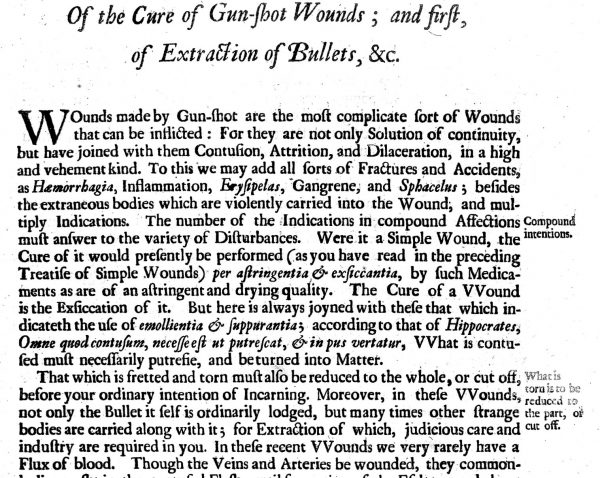Richard Wiseman
Richard Wiseman was a surgeon on the royalist side in the Civil Wars and like Cooke, he too published a book after the Civil Wars describing his treatments during the conflict. Wiseman also recommended using Paré’s methods:
“Ambroise Paré proposes a more easy and sure way of binding up, by passing a needle with a strong twisted thread through the skin near the great vessels; making your stitch over the said vessels by piercing through the raw flesh and skin: then make your ligature upon a fold of a rag. Thus you bind the artery and vein. These several ways have been practised by eminent surgeons for the stopping the blood of the arteries in amputation.”

Portrait of Richard Wiseman (credit: Wellcome Collection)

A page from Wiseman’s ‘Several Surgical Treatises’ (credit: Wellcome Collection)
However, Wiseman observed that using ligatures was not always practical in the middle of battles, as the surgeons had many casualties to treat and not much time. He therefore continued to use cauterisation in some cases as this was quicker than tying ligatures. Wiseman also noted that using ligatures sometimes led to what he called ‘putrefaction’. There was no knowledge of germs or understanding of infection and so surgeons did not take care to wash their hands or use clean ligatures. This could cause infections in the wounds and many patients died. In fact, using ligatures did not result in fewer deaths than using cauterisation.
“…in heat of Fight it will be necessary to have your actual cautery always ready, for that will secure the bleeding arteries in a moment, and fortifie the part against future putrefaction: they requiring after cauterisation no such strict bandage as that thereby you need to fear interception of the spirits.”
